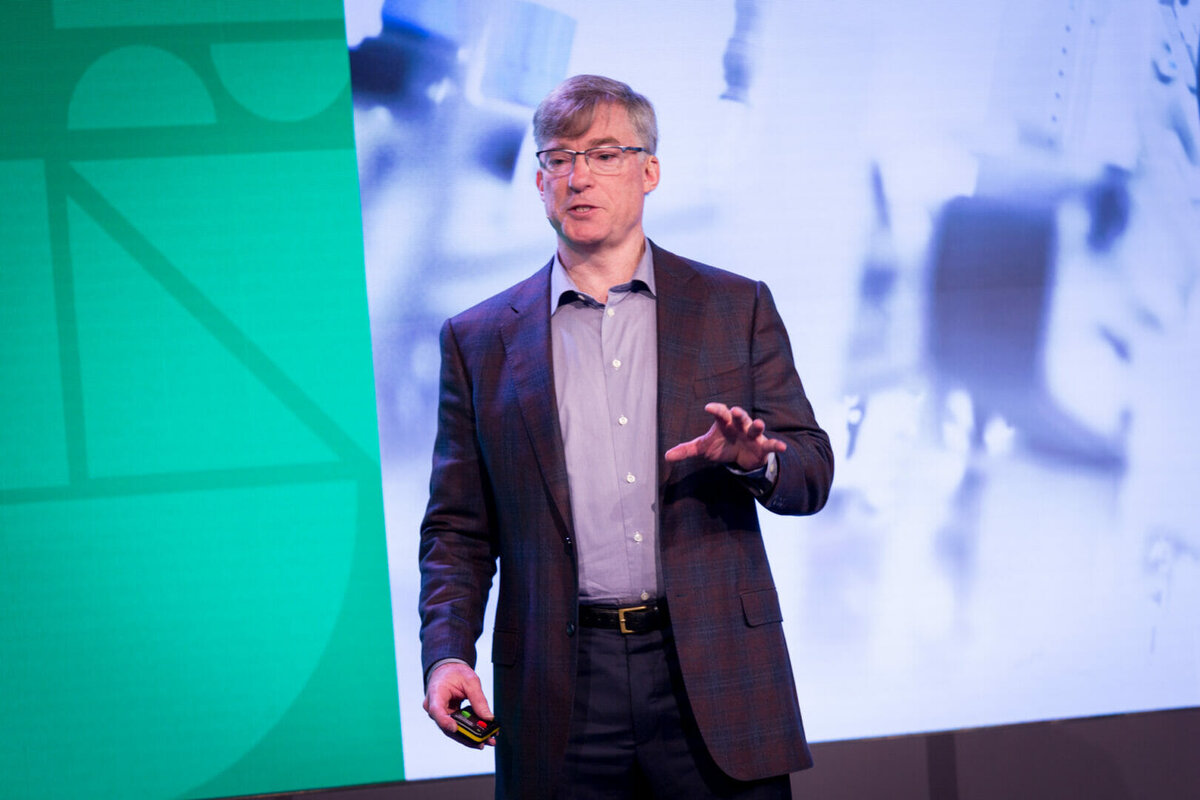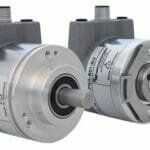A critical requirement of any smart manufacturing initiative is the ability to seamlessly communicate data and information from sensor level all the way up to the enterprise, so the right people have the right information at the right time in the right format. This communication has a proven and pivotal role in lowering total cost of ownership, while improving return on investment and operational equipment effectiveness; and Rockwell Automation is at the technological forefront of this new paradigm.
“We’ve been in business for 115 years,” explains Rockwell Automation Chairman and CEO Blake Moret, “and we are now the world’s largest company dedicated to industrial automation and information solutions. Our primary goal is to expand human possibility, by marrying a user’s imagination with our technology to help them deliver the very best possible solutions.”
With the words “smart manufacturing” on the mind of every industry executive and decision-maker, one question inevitably asked is: Where do we start? The answer is: At the machine level, leveraging a digital transformation to create smart, connected machines.
The industrial environment today
According to Moret, there are three major trends driving today’s industrial environment. “The first is the rise of the middle class in emerging economies, which means companies must be able to compete in these markets to gain business from this growing demographic.
“Second is a requirement for more people who can deal with new technology: countering the growing skills gap. In the U.S. alone, there are hundreds of thousands of manufacturing jobs going unfilled for lack of people with the right skills and talent. This is also true around the world. People are retiring, and it is a struggle to replace them.
“Finally, of course, is globalisation itself. We all compete against the very best in the world, all the time,” Moret elaborates.
From a technological standpoint the cost of connectivity is falling, delivering a more palatable price point. This leads to wider deployment of smart technologies, which, in turn, is driving greater productivity. Hand in hand with this is the impact of the way operational data is interpreted and subsequently deployed, with, information management and analytics underpinning new-found levels of optimisation.
The path towards a Connected Enterprise
Rockwell Automation has a strategy to make this all happen. Its Connected Enterprise approach will help companies get to market faster, lower total cost of ownership, reduce unplanned downtime, and manage enterprise risk and compliance .“Connected technology is allowing companies to take real-time operational data and turn it into insights that can unlock another level of opportunity,” explains Moret. ” When we do this well, we can make enterprises more agile and productive by expanding human possibility.
”A digital transformation can transform an industrial company into a better industrial company,” Moret explains. “Indeed, we apply these concepts in our own facilities. They’re not as automation-intensive as many of our customers’ sites, but the benefits have been amazing and they all stem from tackling the basics.”
By understanding work practices and potential savings, Rockwell Automation plants have reduced work in process (WIP), error-proofed procedures and reduced rework. “Results like ‘reduced time to market’ are tangible and drive sales for us,” Moret adds. “Each plant starts from a unique point, with its own opportunities to add value.”
In Phase 2, the company is adding data streams from its supply chains, using the cloud to complement onsite systems. “In the end, it doesn’t reduce the number of people, but it does change their work,” Moret adds, “and it provides insights that we can apply to our customers.”
Transformation to the digital oilfield
Oil and gas, the Middle East’s primary industrial sector, has entered a transformative era of global competition. This era is rife with fluctuations, as the global oil and gas landscape continues to shift, resulting in uncertainty for economic projections. Furthermore, the implications of today’s industry extend far beyond the latest fluctuations in the global price per barrel of oil.
Oil and gas is arguably the world’s most asset-intensive industry, and every additional wellhead, pump and compressor raises a company’s operational complexity. These, often highly dispersed production assets, combined with tightening environmental regulations and a shrinking pool of skilled, in-house expertise, are forcing oil and gas companies to find new ways to optimise production, increase efficiencies, enhance recovery and contain costs.
“As with other major industries, the search for solutions is leading to a boom in digital technologies,“ states Moret. “In the oil and gas business of tomorrow, data will be the lifeblood of the digital oilfield and will be the key element in any digital transformation journey in what is a very cost-competitive market.”
Today, integrated control and information solutions – including smart devices embedded in wellheads, on compressors and pump stations – are yielding a new wealth of data. Alongside this, leading oil and gas companies are taking advantage of innovations in industrial Ethernet-based connectivity and advanced analytical software to better leverage the full value of this asset data to achieve higher operational performance.
Improving O&G efficiencies
In the oil-and-gas industry, Rockwell Automation’s ConnectedProduction suite – based on the Connected Enterprise vision – is a digital technology that improves operational efficiencies and validates the case for a digital transformation. It connects multiple, disparate systems common to this industry, then cleanses and makes sense of the data.
“We understand that a digital transformation in oil-and-gas is a long journey, often starting with pilot plants and limited capital expenditure, so phased implementation is an important aspect of using ConnectedProduction,” Moret explains. “The digital-transformation journey is constantly evolving from assessment to actual optimisation. It’s not a linear process. We work with our partners in the oil-and-gas industry to assist with assessments, planning, technology integration and early piloting and concepts. Analysis and visualisation assistance is also provided to help with understanding. This takes time but pays off for operators.”
The benefits of convergence
Wireless technology, visualisation software and other advances now allow oil and gas companies to access and monitor assets in real time, and merge disparate oilfield data into streams of actionable information – anywhere, anytime. As the benefits from the convergence of automation, communications and information technology multiply, oil and gas companies are now truly heading towards digital oilfields.
“In addition to providing more secure connections to the data — bringing the silos of information together — our ConnectedProduction approach provides a suite of oil-and-gas applications and tools that allow managers and producers to gain operational insights into their operations,” says Moret. “This includes production and operation workflows, automation of manual processes and role-based visualisation, so the right stakeholder sees the right information based on that person’s function. It also connects to advanced analytic platforms, allowing operations to gain valuable insights into the process.”
Intelligent assets – from data to decision making
While high-integrity data is the foundation of the digital transformation journey, data on its own means nothing. “We combine and unlock the data with competent decision-making to expand what is possible, helping to make our customers more connected, productive, intelligent and ultimately, competitive,” says Moret.
A key concept of ConnectedProduction is the idea of intelligent assets. “Intelligent assets are a way to group together software and hardware components in the field and provide automatic configuration,” Moret elaborates. “An example would be a well-pump controller. The ability to automatically connect to an asset, give it context and then automatically generate dashboards, workflows and analytics hugely reduces the number of skill sets needed to configure that asset. The historian, visualisation and program are all done automatically by the system.”
Moret describes how a customer, through assessment and analysis, had developed an array of manual processes that involved sending engineers to the field to collect data from well pads, before coalescing the data into spreadsheets for analysis related to the level of chemical injection needed to avoid wax build up, which impacted production. While the analysis was valid, it took time, and the required resources weren’t always available. Finally, when the resulting recommendations were made to production, it was often too late to take advantage of the analysis.
“This same customer implemented our ConnectedProduction solution to gather data from assets, automatically handing that data off to advanced analytics, which provided analysis of the data and made real-time recommendations regarding chemical injection,” Moret explains. “Based on the number of wells on a well pad, the customer is now realising half a million dollars a year in savings.”
Another example of ConnectedProduction was at a large producer with a large installed base of mature and disparate systems, which were used for control and safety. as well as there being many silos of information across different systems, they had workforce issues, too. They didn’t have the skills sets to maintain all the systems and limited capital to upgrade them.
This customer turned to Rockwell Automation for services to support a planned migration over time. “By implementing our ConnectedProduction suite, and taking advantage of automation solution services, a standard set of hardware architectures for each of their control systems was created, allowing a phased migration while still connecting the existing infrastructure.”
Expanding Human Possibility
Connected people, devices and systems, advanced analytics and modern network architectures are optimising processes and results in ways previously inconceivable. The business and technology of industrial automation is advancing at a remarkable rate and smart, data-driven manufacturing aided by digital manufacturing is driving automation performance to new heights.
Today, the industrial automation industry is significantly influenced by the need to achieve improved operational productivity. “To accomplish this, manufacturers are looking for improved equipment efficiency, more effective processes and better informed – and thus better prepared – workers. While technology is the key to achieving all of these, when we combine the strengths of technology with an engaged, enthusiastic and imaginative workforce, anything is possible,” Moret enthuses.
“In a manufacturing environment we are linking people, machines and data across an entire business – that’s how machine builders and end users become more effective and productive. For machine builders, the focus is on future-proofing an end user’s investment. For end users, it’s about leveraging new smart, connected capabilities to be better able to take advantage of the innovations to remain competitive in the global market.”
These manufacturers’ critical needs are resulting in innovations in industrial platforms, cloud-based and real-time analytics, secure remote access, virtualisation, wireless technologies, mobile apps, connected lighting, workforce safety and support… and more. These developments are supporting a smart manufacturing strategy that helps optimise automation and increase competitiveness, now and into the future.





